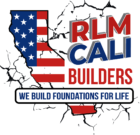Steps For Concrete Damage Repair
Repairing Concrete Damage in Reinforced Concrete Structures
If defective concrete must be repaired, specific procedures must be followed to determine whether it must be repaired and, if so, which restoration technique and material should be used.
These procedures will ensure that the repair process is completed successfully and quickly, without wasting time or money. Concrete repair is necessary as the structure ages for a variety of reasons.
The concrete repair process includes investigating the cause of the concrete defect, assessing the extent and severity of the damage, evaluating the need for repair work, selecting appropriate repair techniques and materials, preparing the repair process, applying the repair technique, and finally curing the repaired area.
Find the Causes of Concrete Flaws
To address the issue, it is necessary to accurately identify the causes of the problem. If the source of damage is eliminated or reduced significantly, the restored structural part will be more durable and have a longer service life without the need for maintenance.
However, if the underlying cause of the concrete damage is not addressed, the same concrete flaw may reoccur in the future, resulting in a waste of money and labor.
It’s important to remember that the specific issue at hand could be the result of a confluence of factors. All of the elements must be addressed in this scenario, or the repair effort will fall short of its goals.
Weather, cavitation, abrasion, reinforcement corrosion, chemical assaults, carbonation, fractures, design and construction errors, and structure aging are all potential threats to the structure’s durability and integrity.
If the damage is the result of a recurring event, the structural repair must account for the influence of the cause; however, if the damage is the result of a one-time event, this can be overlooked.
Calculate the Amount of Concrete Damage
The extent of concrete damage is determined to determine the severity of the damage and its impact on the life and serviceability of the structure. Once the extent of concrete damage has been determined, it is possible to determine whether the structural part should be replaced or repaired. It also aids in the implementation of preventative measures to avoid future harm from the known source of the damage.
The extent of concrete damage assessment includes determining how much concrete has deteriorated and how this deterioration affects the structure’s service life, i.e. how much concrete has lost its strength or load-carrying ability.
Concrete Soundness Examination
It is a common method for calculating the amount of concrete damage. In many cases, when combined with visual examination and performed by an expert engineer, this procedure can provide an accurate assessment of the damage.
A hammer is struck on the concrete surface in this test; a distinct ringing sound indicates sound concrete, whereas a drummy, hollow, or dull sound indicates delaminated or disbanded concrete.
Keep in mind that deep delaminations or delaminations with only minor separation may not sound drummy or hollow. Placing a hand near hammer blows or closely monitoring sand particles on the surface near the hammer blows may reveal the presence of such delaminations.
If the hand feels vibrations in the concrete or if the sand particles appear to bounce slightly due to the hammer strokes, the concrete is delaminated.
The strength of concrete can be evaluated while assessing the level of damage caused by hammer blows. When struck by a hammer, the high strength of concrete produces a distinct ring, and the hammer intelligently rebounds. Concrete with low strength bounces with a soft thud and little hammer rebound.
Non-Destructive Concrete Testing (NDCT) can also be used to determine the extent of concrete damage. More details on concrete NDT testing.
Determine the need for structural concrete repair.
Repairing concrete structural elements required money and time, and the damage had to be assessed to determine whether or not the structure needed to be repaired.
If the damaged concrete endangers the structure’s safety and serviceability, or if the damage is spreading quickly, the repair process should begin right away.
However, if concrete damage is gradual and not severe (detected early on), there are several options for slowing damage growth.
Even if repair is required, early detection of damage allows for a more efficient allocation of funds to cover repair expenses.
Basement and foundation restoration can be frightening, but RLM Retrofit Foundation is a reputable company, and will put your mind at ease by allowing your home to stand on solid ground! Call us for a free Foundation Inspection Near Me Hermosa Beach .
In terms of the building structure, what exactly is a slab foundation Hermosa Beach










